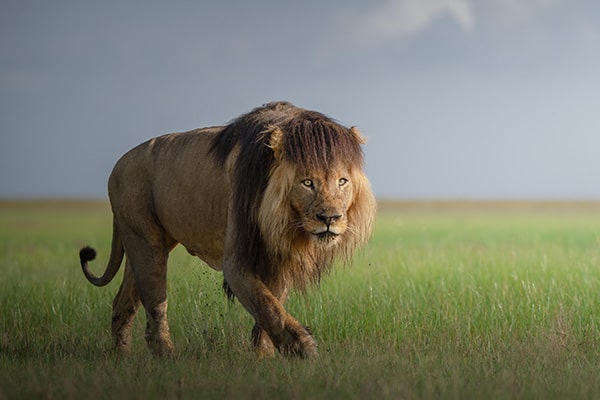
About Liuwa Plain National Park
Introduction
Liuwa Plain National Park has one of the oldest conservation histories in Africa, dating back to the 19th century when the King of Barotseland, Lubosi Lewanika, appointed his people the custodians of the landscape. When African Parks entered into a management partnership agreement in 2003 with the Department of National Parks and Wildlife (DNPW) and the Barotse Royal Establishment, this sentiment began to be renewed. With an estimated 12,000 people legally living within the park, Liuwa is a prime example of how people and wildlife can co-exist and benefit in a shared landscape.
Conservation Biodiversity

Before 2003, wildebeest and zebra were in steep decline, grasslands were threatened by rice fields, and all but one lonely lioness remained, known as “Lady Liuwa”. In 2008, African Parks began a series of lion reintroductions to reunite this last lioness with her own kind. Today, due to these efforts, she has left behind a small but growing pride of lions after her passing in 2017.
Over a similar period, eland and buffalo were reintroduced to the park and the plains game began to increase, providing a healthy prey base for the lions, as well as for an increasing number of cheetah and the very large hyaena population. Wildebeest numbers continued to grow and move across the plain, forming the second largest wildebeest migration in Africa with 45,000 individuals at last count (2023).

Community Development
Liuwa is the largest employer in the region and provides critical education and health benefits to hundreds of community members. Over 200 children receive scholarships annually and so far, more than 4,000 local farmers have benefitted from training in sustainable farming practices. Through ongoing community engagement and integration, Liuwa has contributed to uplifting the communities’ socio-economic status with employment and tourism revenue. As a result of effective management and conservation law enforcement, poaching has subsided and community land-use plans have been implemented along with sustainable fish harvesting and the creation of alternative livelihoods such as honey, dried mango and cashew processing.
Today, now that the landscape is once again become a source of stability and abundance, the people of Liuwa have found a renewed sense of custodianship.
Park Revenue Generation
Stimulating sustainable businesses for local communities is one of the goals that Liuwa Plain National Park aims to achieve, where communities have been assisted with the establishment and management of their own campsites within the park, with all proceeds accruing to them. Through integrated management of these campsites with the Community Development Fund, the communities’ status has been uplifted through employment and revenue generated through tourism, while simultaneously nurturing appreciation of the importance of wildlife and its management.
Liuwa Plain is rapidly becoming world-renowned as a major tourist attraction. It made The New York Time’s “Top 52 Places to Visit” in 2018; Time Magazine’s “2018 100 Greatest Places”; and Travel & Leisure’s 2018 “It List”.

